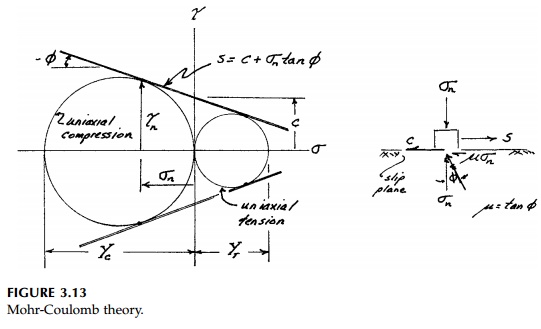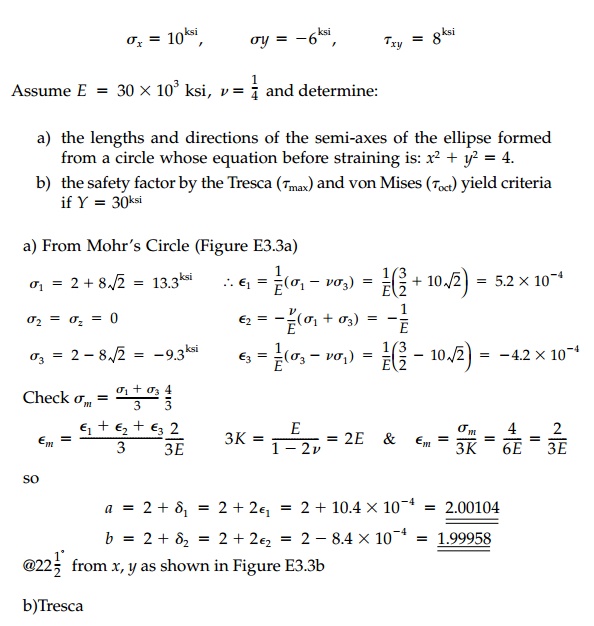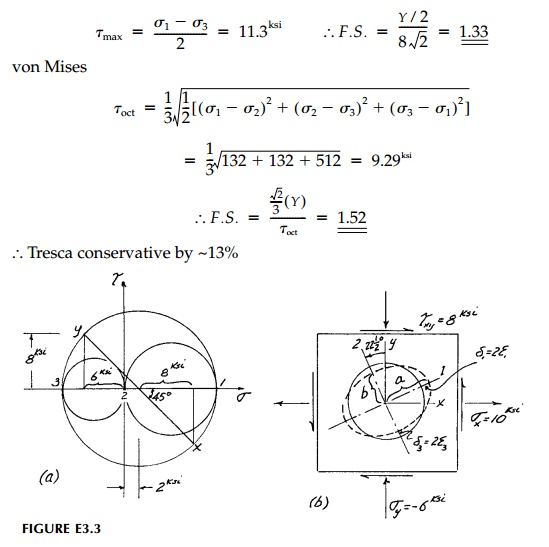Chapter: Civil : Principles of Solid Mechanics : Stress-Strain Relationships (Rheology)
Yield(Slip) of Brittle Materials

Yield (Slip) of
Brittle Materials
So far we have assumed
that our material has equal yield strength in tension or compression. However,
this is never quite true even for pure metals and mild steel. All materials, in
fact, have a somewhat higher yield strength in compres-sion than in tension
and, if this difference is pronounced, the material is brittle.** Common
engineering materials of this sort are cast iron, concrete, rock, and soil,
including sand, which has no tensile strength whatsoever.
The simplest conceptual
model for a brittle material is to visualize that all materials have two types
of shear strength:
a) Natural
or inherent strength due to primary and/or secondary bonds that glue
together atoms, molecules, crystals, or particles, and
b) Dry
friction or Coulomb friction.
Coulomb recognized and
incorporated them both in his more powerful ver-sion of the Tresca theory.
Because it is best described in terms of Mohr's Circle, this elegant and
unifying concept is today called the Mohr-Coulomb Theory.
The simplest version is shown in Figure 3.13. It
will be discussed in much more detail later since it represents all engineering
materials to a reasonable

approximation. In terms of a rheological model, the
simple EPS must now include the normal stress _n
on the slip plane, which adds a component to the strength proportional to the
coefficient of friction. Thus the Mohr-Coulomb criterion is written:

which is the envelope
of the Mohr Circles for each test in stress space. The 'cohesion,' c,
represents the inherent or natural shear strength which, for a ductile EPS,
would be Y/2. The Mohr-Coulomb criterion is, therefore, non-linear. For
easier computations it can be stated in terms of max or oct
rather than the shear stress on the actual slip surface, n.
Example 3.3
A plate (plane stress) is subjected to the constant
stress field:


Related Topics